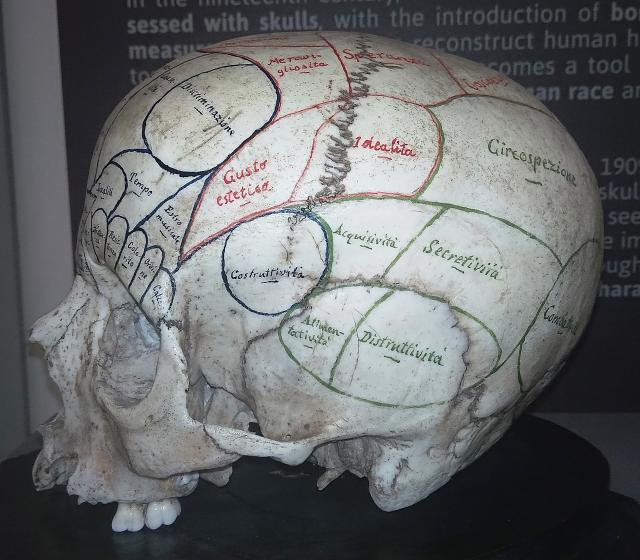Phrenological cranium
CAMS - The Museum of Human Anatomy

The tour of the Museum of Human Anatomy finishes a section on Criminal Anthropology containing one of the museums oldest pieces: a phrenological cranium. This item is evidence of the widespread popularity of phrenology (from Ancient Greek phrēn 'mind', and logos 'knowledge'). At the outset of the 19th century this discipline was developed by two German doctors Franz Joseph Gall and Johann Gaspar Spurzheim but today it’s recognised as a pseudoscience (meaning the theory aspires to be scientific but does not stand up to rules of evidence deriving from scientific experimentation).
Phrenology posited that anatomical locations in specific areas of the brain corresponded to personality traits such as intelligence, character, aggressiveness, aesthetic sensibility, a propensity for stealing or lying and friendliness, amongst others.
The discipline was gradually abandoned over the course of time; today it is no longer maintained that the shape of a person’s head can define their personality traits although this idea was maintained for decades throughout the 19th century by numerous anatomists who dedicated considerable efforts to measuring craniums in order to determine an individual’s character and probable behaviour.